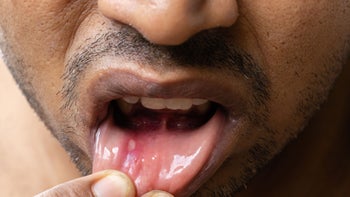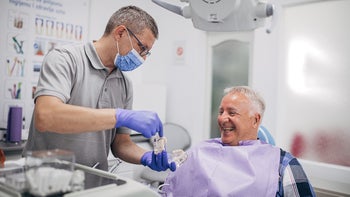
Permanent vs. Removable Retainers: Understanding the Pros and Cons
Key takeaways:
Retainers are essential to preserve the results of your orthodontic treatment. There are two types of retainers: permanent and removable.
Permanent retainers are sturdy and require less attention. But they may cause gum and bone disease if not cleaned properly.
Removable retainers are easier to clean but require more work. You’ll have to remember to wear them as instructed and avoid losing or damaging them.

Your dental health is a journey, whether you like it or not. If you just completed your orthodontic treatment with braces or clear aligners, your journey isn’t over. Braces and clear aligners play only a small part in straightening your teeth. Now, it's your job to keep your teeth aligned with dental retainers.
There’s a lot to know and understand to help you make the right decision between a permanent and a removable retainer. Let’s take a deep dive into what permanent and removable retainers are, and their pros and cons, so you can make an informed choice.
What is a retainer?
A retainer is used after your teeth have been straightened by clear aligners or braces to keep them in place. After orthodontic treatment stops, your teeth tend to keep moving in an effort to go back to their former position.
Search and compare options
The bone around your teeth may also be almost 25% thinner right after orthodontic treatment. And this can also cause your teeth to shift. Wearing a retainer prevents a shift from happening until your bone gets harder.
There are two types of retainers: removable and permanent. A removable retainer will need to be worn every night, and a permanent retainer will be on your teeth at all times. Without a retainer, your teeth will eventually move back out of place — even after all of the hard work to straighten them.
What is a permanent retainer?
A permanent retainer is also known as a “lingual retainer” or “fixed retainer.” It’s a metal wire that’s bonded onto the tongue side of your front teeth. A fixed retainer is usually only placed on the front four to six teeth. These teeth have the highest tendency to move back to their original place after orthodontic treatment is complete.
A permanent retainer resembles traditional braces in a lot of ways but is hidden on the back side of your teeth for a better cosmetic look. Let’s review the pros and cons of permanent retainers.
Pros of permanent retainers
There are many benefits of a permanent retainer. The advantages include:
The retainer is fixed in place with no need to remove it.
There’s a lower chance of losing your retainer.
The retainer is sturdy and won’t break easily.
It provides a continuous way to keep your teeth aligned.
Cons of permanent retainers
There are some downsides to wearing a permanent retainer. The challenges can include:
Permanent retainers require extra attention during your oral health routine, especially when flossing.
If the retainer isn’t cleaned properly, it may lead to gum or even bone disease.
Hard or crunchy foods may break the metal wires.
Sugary foods can break down the adhesive over time, loosening the retainer.
What is a removable retainer?
A removable retainer is made of clear plastic and is designed to fit perfectly around your newly straightened teeth. Removable retainers aren’t fixed in any way to the teeth. This allows you to remove them while eating, brushing, and flossing.
You will have to handle and care for your removable retainer every day for it to work. Let’s take a look at the pros and cons of this type of retainer.
Pros of removable retainers
In addition to keeping your teeth in position, removable retainers offer other specific benefits. These include:
Removable retainers are quick and easy to remove at any time.
They’re easier to clean.
Brushing your teeth and flossing are easier because you can take the retainer out.
Cons of removable retainers
As easy as it is to remove this type of retainer, it’s even easier to forget about wearing it. Other disadvantages include:
Removable retainers can be easily thrown away by mistake or misplaced after removal.
You have more responsibility when wearing your retainer as instructed.
This type of retainer can increase bacteria in and around your teeth if not cleaned properly.
The retainers may need to be replaced more often as they wear down (especially if you grind your teeth).
Which retainer is best after braces or clear aligners?
Your orthodontist may recommend both removable and permanent retainers after straightening your teeth. Almost 50% of dental health providers prefer a fixed retainer on the bottom teeth and about 90% prefer a removable retainer for the top teeth.
The choice between a removable and permanent retainer will depend on the extent of your orthodontic treatment. You should have a detailed conversation with your provider on which dental retainers would be best for you. This team effort will ensure that you make the right decision.
How much do permanent and removable retainers cost?
Permanent retainers can cost anywhere from $150 to $500 for one. Your dentist may suggest that you need a retainer on both your top and bottom teeth. In this case, the price will double. The price for a permanent retainer may seem a bit high, but you may consider it an investment. Once you have a permanent retainer placed, it tends to last up to 20 years.
The initial cost for removable retainers will be anywhere from $150 to $600. Removable retainers are easily lost and damaged, so you may need to get another one made. This can make removable retainers more costly over time.
The bottom line
Wearing a retainer is a lifelong commitment after orthodontic treatment. This is the only way to keep your teeth from shifting over time. There are pros and cons to permanent and removable retainers. If you’re unsure which retainer is best for you, talk with your orthodontist. Together you can review the benefits of each retainer and decide the best way to keep your smile intact.
Why trust our experts?


References
Andreikute, A., et al. (2017). A survey of protocols and trends in orthodontic retention. Progress in Orthodontics.
Kartal, Y., et al. (2019). Fixed orthodontic retainers: A review. Turkish Journal of Orthodontics.
Yu, J., et al. (2016). Does orthodontic treatment affect the alveolar bone density? Medicine.

























